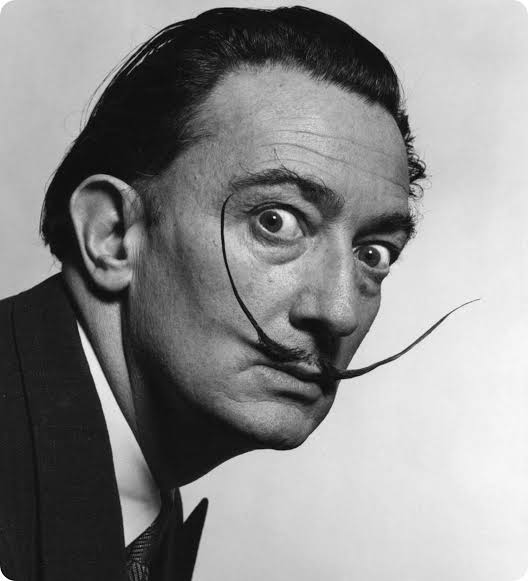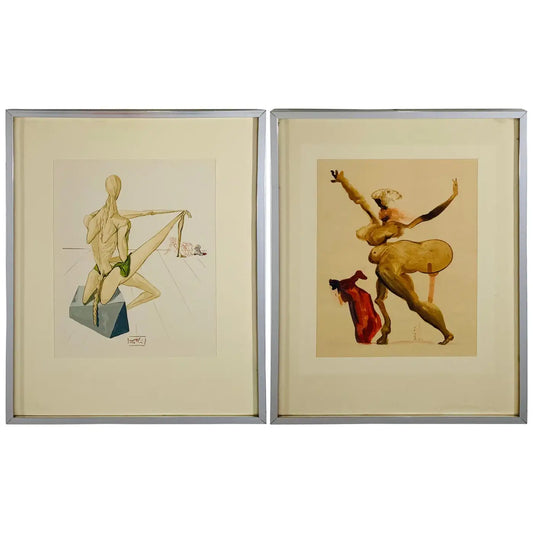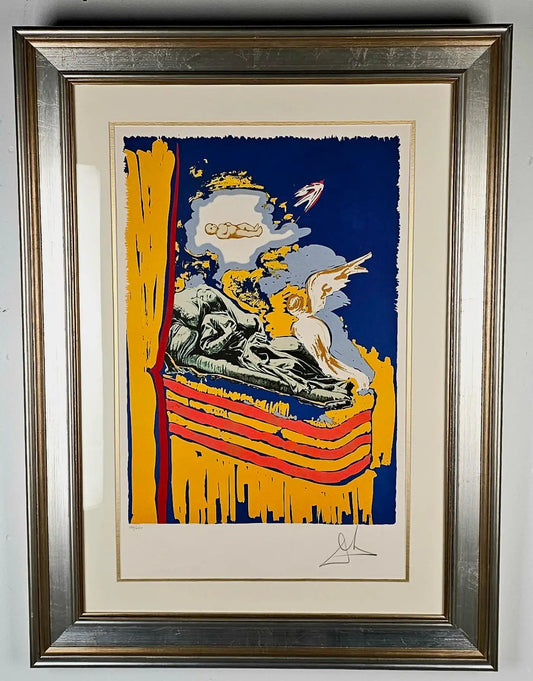Collection: Salvador Dali
Salvador Dalí (1904-1989) was a Spanish surrealist painter renowned for his eccentric and imaginative artwork that pushed the boundaries of conventional art and reflected his fascination with dreams, the subconscious, and symbolic imagery. Born in Figueres, Catalonia, Dalí displayed artistic talent from a young age and later studied at the Royal Academy of Fine Arts of San Fernando in Madrid, where he developed his unique style and began to challenge traditional art forms. Dalí's early work was influenced by Impressionism and Cubism, but he found his true calling in Surrealism, joining the movement in the late 1920s. He became famous for his bizarre and dream-like compositions, often featuring melting clocks, distorted figures, and surreal landscapes. One of his most iconic works, The Persistence of Memory (1931), depicts melting clocks draped over a barren landscape, symbolizing the fluidity and irrelevance of time. His work was influenced by Sigmund Freud's theories of psychoanalysis, and he often explored themes related to dreams, sexuality, religion, and mortality. Dalí's paintings are known for their meticulous attention to detail and realistic depictions of fantastical, dream-like scenes. He referred to his technique as "paranoiac-critical," a process of tapping into the subconscious to create imagery that defies rational interpretation. In addition to painting, Dalí worked in various media, including sculpture, film, photography, and even fashion. He collaborated with filmmakers like Luis Buñuel on Un Chien Andalou (1929) and L’Âge d’Or (1930), contributing surreal, boundary-pushing scenes that remain iconic in film history. Dalí also worked with Alfred Hitchcock on the dream sequence for the movie Spellbound (1945), further showcasing his influence beyond traditional art. Dalí’s personal life was as extravagant as his art. Known for his flamboyant personality, extravagant mustache, and eccentric behavior, he cultivated a persona that made him as much a subject of fascination as his work. His wife, Gala, was a major influence on his life and art, serving as his muse and manager. The two shared a complex, lifelong relationship that deeply affected Dalí's work. In the 1940s, Dalí moved to the United States, where he continued to expand his artistic vision and gained international fame. In his later years, he became increasingly interested in science, religion, and mysticism, exploring themes of DNA, space, and the divine in his artwork. Some of his later works reflect these interests, blending religious iconography with surrealist elements. Dalí returned to Spain in his later years and lived a quieter life until his death in 1989. His legacy endures not only through his artwork but also through institutions like the Dalí Theatre-Museum in Figueres, which he designed as a surrealist monument to his life and work. Salvador Dalí’s contributions to art have cemented him as one of the most influential and distinctive artists of the 20th century. His ability to blend realism with surrealism, creating vivid and thought-provoking works, has inspired countless artists and left an indelible mark on the art world.

-
Salvador Dali The Divine Comedy Inferno Canto 5 and 33 Signed in Plate, 1960
Sale price $2,450.00 Regular priceRegular price $2,450.00Unit price / per

